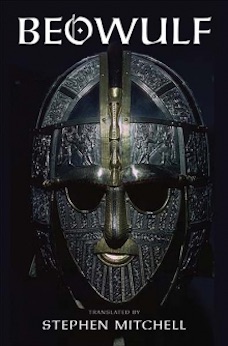By Carol A. Leibiger
Beowulf is the oldest Germanic epic, relating the eponymous hero’s battles against the monsters Grendel and Grendel’s mother in Denmark and, fifty years later, his death in combat with a dragon in his southern Swedish kingdom. Probably composed as early as 700 CE, it survives in a single vellum manuscript created as late as the eleventh century CE. It contains the earliest attestation of the Sigemund material, which appears in the later medieval, Middle High German Nibelungenlied and Old Norse Vǫlsungasaga. Beowulf’s significance as a historical and linguistic monument is undisputed; in 1936 J.R.R. Tolkien’s essay “Beowulf: The Monsters and the Critics” established it as a great work of literature. Because it treats timeless themes such as heroism, loss, community, hospitality, loyalty, monstrosity, gender roles, social and class obligations, and, of course, the conflict between good and evil, readers continue to read, enjoy, and learn from Beowulf.
Many translations of the epic exist, which are executed to fulfill the needs of different types of readers. American poet and translator Stephen Mitchell has produced a new Modern English translation based on Frederick Klaeber’s scholarly transliteration of the Anglo-Saxon text (fourth edition, 2008), with the Old English text and Mitchell’s translation on facing pages. Mitchell’s translation is a faithful rendering of Klaeber’s edition, with the exception of sixteen deviations, in which cases the translator has preferred the interpretations of other experts such as Alfred Bammesberger, R.D. Fulk, Tolkien, or an earlier edition of Klaeber.
Mitchell rejects the temptation to replicate Old English word order and tripartite alliteration (the “rum, ram, ruf of it”), preferring instead to render the epic using “diction that is midway between the formal and the colloquial: a contemporary language that seems natural and alive.” His aim is similar to that of Seamus Heany’s more colloquial, Irish-lilted translation (2000), and he succeeds admirably, realizing his goal to “make the language of this translation seem transparent.” This translation utilizes a simple, robust style, eschewing archaic, inverted language and unpacking most of the kennings that can obscure meaning. Mitchell also aids readers with his front matter, providing a short, focused introduction to Beowulf’s history and significance, a note explaining the “rules” he imposed upon his translation, a pronunciation guide to the names found in the work, and a map of the portions of Scandinavia in which the epic transpires. Helpful back matter includes genealogical charts of the Danes, Swedes, and Geats mentioned in the story, notes explaining family relations and histories, predictions and foreshadowing, Biblical allusions, cultural practices, and allusions to Germanic myth and folklore, followed by a short bibliography of the major modern Beowulf translations. Unfortunately, there is no association between the text and the notes, leaving the reader to stumble upon them after having read the work.
Mitchell’s second, more challenging goal is “to let the poetry of the original text shine through in the language of today.” Since this is a poetic translation, Mitchell appropriately chooses to include alliteration, the basis of Old English meter. The meter used by the Beowulf poet requires alliteration of initial stressed syllables across half lines with two alliterating syllables in the first half line and a third and possibly fourth in the second half line. Mitchell’s “lighter mode of alliteration” incorporates four stresses per line with at least two alliterations across the translation’s half lines. However, given the different stress pattern of Modern English, it is not always stressed syllables that alliterate (e.g., Hrothgar’s utterance, “For this síght, / may thanks sin-cérely be given…” [l. 938]). Additionally, as Mitchell “value[s] concision,” his translation is 117 lines shorter than the original text. Both the Old English and the Modern English texts are consecutively numbered, with 3182 and 3064 lines, respectively, and it is therefore difficult to align the texts while reading. This makes them unsuitable for students of Anglo-Saxon language and literature, who are better served by R.M. Liuzza’s translation and more detailed scholarly apparatus (second edition, 2013). However, the deficits mentioned above are not significant ones for general readers, who will enjoy Mitchell’s simple, vigorous translation, which affords a glimpse into the world of an important ancient text from the beginnings of English cultural history.
Carol A. Leibiger (ΦΒΚ, University of Connecticut, 1977) is Associate Professor in the I.D. Weeks Library at the University of South Dakota and a resident member of the Alpha of South Dakota chapter of Phi Beta Kappa.




